Note: This website was automatically translated, so some terms or nuances may not be completely accurate.
The "Experience" That Captivated 250,000 People: How the "CLAMP Exhibition" Ensures No One Is Left Behind
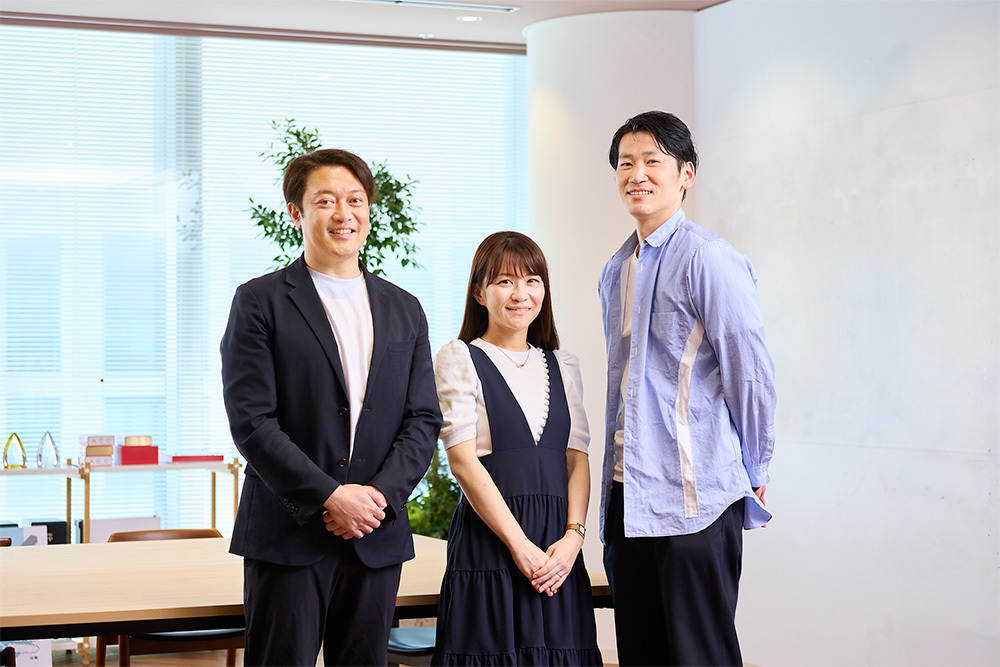
Exhibitions: From "Viewing" to "Experiencing".
Fans of content represented by manga and anime tend to seek not only "viewing" but also "experiencing," leading to significant changes in the nature of exhibitions.
Amidst this shift, Dentsu Inc. and Dentsu Live Inc. have launched "dentsu Exhibition Value Design," a service that produces exhibitions from the perspective of creating "new spaces for experiencing content."
"dentsu Exhibition Value Design" PR Release
https://www.dentsu.co.jp/news/release/2025/0207-010840.html
This series will introduce new types of exhibitions produced by both companies. This installment covers the "Cardcaptor Sakura Exhibition" (2018) and the "CLAMP Exhibition" (2024).
The "Cardcaptor Sakura Exhibition," held in Tokyo and Osaka, recorded approximately 140,000 total visitors in Tokyo alone. Furthermore, the "CLAMP Exhibition," showcasing the entire body of work by CLAMP (the creators of Cardcaptor Sakura), was held at the The National Art Center, Tokyo, attracting approximately 250,000 visitors over 72 days.
How were these "experiences" called exhibitions, which drew such large crowds, created?
We invited guest speaker Nozomi Matsuura, who oversees secondary use of CLAMP works at Kodansha, along with Dentsu Inc.'s Shunsaku Seki, producer of both exhibitions, and Ryusuke Nanki, responsible for spatial design, to share the behind-the-scenes story.
※CLAMP is
A creative collective consisting of four women: Kagetsu Igarashi, Nanase Okawa, Nekoi, and Mokona. They debuted commercially in 1989 with "RG VEDA". Since then, they have produced numerous hit works across diverse genres including shōjo manga, shōnen manga, and seinen manga. Major works include "Tokyo BABYLON", "X -X-", "Magic Knight Rayearth", "Cardcaptor Sakura", and "Tsubasa -RESERVoir CHRoNiCLE-".
Two Key Points Observed in the Initial Phase of the "Cardcaptor Sakura Exhibition"
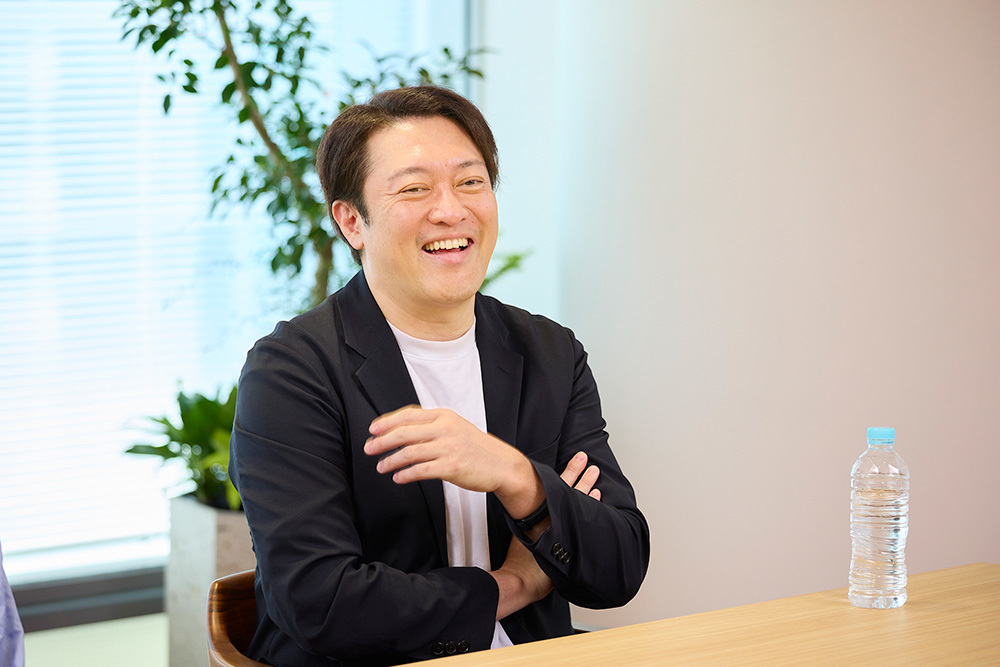
──Please introduce yourselves.
Sek: For over 20 years since joining Dentsu Inc., I've worked on projects involving publishers. Currently, I focus on solving publishers' challenges, including investments, such as planning exhibition projects as a project manager. For exhibition projects, as a producer, I handle internal and external teaming, venue securing, and budget planning during the initial planning phase. During project execution, I serve as the overall coordinator across all parties and manage the production committee.
Nanki: As an architect, I primarily focus on creating spaces for stores and exhibitions. I joined the "Cardcaptor Sakura Exhibition" and "CLAMP Exhibition" as the spatial designer after being approached by Dentsu Inc. Creative Director Ryoichi Nakano. Having grown up with CLAMP's works myself, I was thrilled to be involved.
Matsuura: I work across both the Rights MD Department and the IP Business Department at Kodansha, handling rights licensing for merchandise, tie-ins, events, and more. My core role involves managing licensing for manga and anime merchandise, collaborations, and tie-ins.
However, CLAMP's works are a bit special. A cross-departmental organization called the "CLAMP Room" was formed, and as a member of this room, I oversee and produce planning for all secondary uses of CLAMP works published by Kodansha—not just merchandise, but also events, anime, live-action adaptations, stage plays, and more.
──Could you tell us about the background leading to the launch of the "Cardcaptor Sakura Exhibition" (hereafter "Sakura Exhibition") held in 2018?
Sekine: As background, in 2014, we held the "Attack on Titan Exhibition" at the Ueno Royal Museum, featuring Kodansha's content. At that time, the person in charge of "Cardcaptor Sakura" rights approached us, asking us to boost the series through an exhibition. We began the process in 2015, submitting proposals and securing a venue.
When organizing an exhibition, there are two key initial steps. The first is defining the "purpose and concept" you want to achieve through the exhibition. While aiming for business success, it's crucial to clearly define "what you want to accomplish" beyond that. This time, we first deepened the "purpose" through discussions with Kodansha, then considered what kind of exhibition to present, including teaming up with creative partners.
The other key point is the "venue." For large-scale exhibitions, securing a venue requires starting the process about three and a half years before the event date, otherwise slots fill up. For the Sakura Exhibition, even before the exact dates were confirmed, we began discussions with several potential venues, including the Mori Arts Center Gallery, about conditions and other details.
The path leading to the original artwork was also crucial. The challenge of creating an "experiential exhibition enjoyable for parents and children alike."
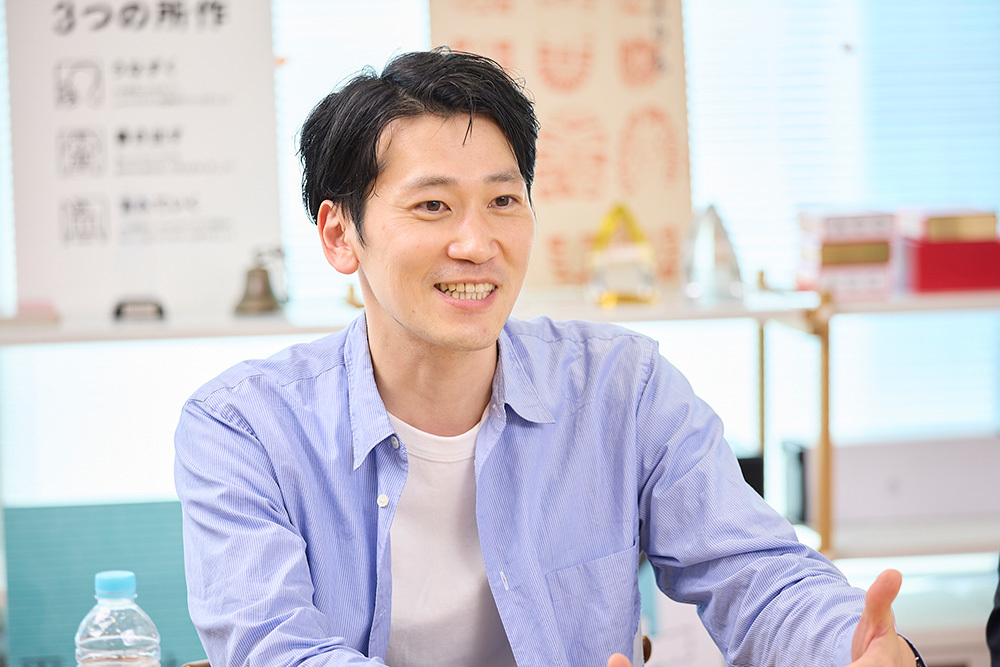
──What were the "purpose and concept" of the Sakura Exhibition?
Seki: "Cardcaptor Sakura" is a long-running series that began in 1996. However, 2018, when we held the exhibition, coincided with the launch of a new series. So, we discussed with Kodansha where we should place the significance of holding an exhibition at this timing.
As a result, we concluded that fans from the early days would likely have children old enough to bring them to an exhibition. We aimed to reach that demographic. The idea emerged to create a participatory event, crafting an experience enjoyable for both parents and children.
At the time of this discussion, exhibitions were still often perceived as academic events focused on displaying original artwork. We decided to shift towards a more entertainment-focused, "experiential" exhibition that everyone could enjoy without feeling intimidated.
──I don't think there were many "experiential exhibitions that parents and children can enjoy together" before this. As the creative team, how did you approach this concept?
Nanki: CLAMP's works have an absolutely wonderful worldview, and we had secured the original artwork for this exhibition. The power of the actual original artwork is a given, so from the creative side, we discussed focusing on the experience leading up to seeing the artwork and how to incorporate enjoyable elements.
Specifically, we created pathways where visitors could sense the social significance of Cardcaptor Sakura and CLAMP's work, showed videos, and added an element called the "Flower Room" where visitors could stick flower-shaped stickers on the wall, creating an experience where they could "add to the exhibition" themselves.
By building this flow, we aimed for a structure enjoyable not only for passionate fans, but also for first-time viewers and accompanying family members.
The painstaking design of the "experience." Our guiding principle was "how we wanted fans to perceive Sakura."
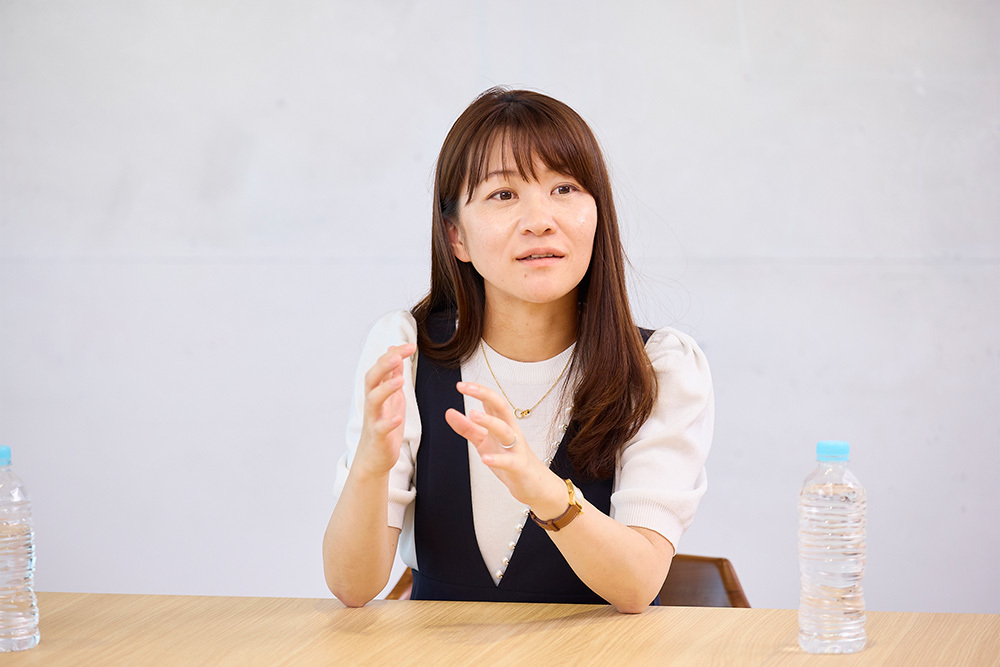
──Please share your honest reaction when you first heard a proposal from Dentsu Inc.
Matsuura: I honestly couldn't fully envision whether the proposed exhibition methods and approach would be the best for a Cardcaptor Sakura exhibition. I also wondered how it would resonate with different visitors—families, longtime fans, readers of the new series—each likely seeking something different. This was because, at the time of planning, exhibitions of original manga artwork were rare, and there were very few examples or images of what constituted a "good exhibition."
Ultimately, establishing the theme "The Enchanted Museum" helped solidify the form of each booth's exhibits and experiences. Setting a theme that everyone involved could visualize was both challenging and crucial.
──Given it was a rare "experience"-focused exhibition at the time, visualizing it beforehand must have been difficult.
Matsuura: For example, the "Flower Room" mentioned earlier by Mr. Nagi was based on the concept that visitors would stick flower stickers on the walls, gradually transforming the room itself. However, initially, since adults of my generation don't often have experiences sticking stickers in daily life, just reading about it in the proposal document made it hard to imagine if it would actually be fun. I even opposed it at first, thinking, "If we have that space, wouldn't it be better to display the original artwork?"
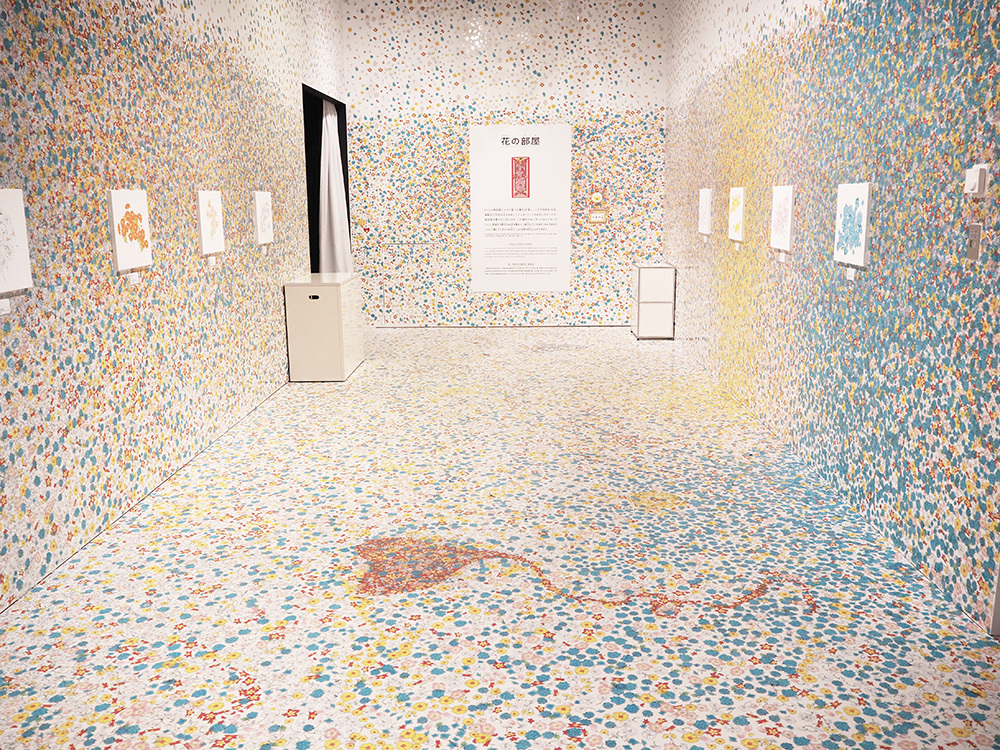
Nanki: For us proposing the idea, "Will people really stick the stickers as intended?" was a significant challenge. We felt sharing the reality was crucial, so for the Sakura Exhibition, we didn't just use paper proposals; we also created models. Even so, "The Flower Room" was the one concept that was hard to convey even with a model (laughs).
Matsuura: In my main role of merchandise development, we usually get to see physical samples like color proofs, allowing us to grasp the overall picture. But with exhibitions, even wall samples are only about 10cm square.
For the Sakura Exhibition, we actually produced Sakura's costumes from the manga as real clothing. But even the fabric samples were only about 5cm square. It was incredibly difficult to judge things based solely on imagination – like whether a color that looked good on a small piece of paper or fabric would end up too dark when scaled up to full size...
Whether it was costumes or spatial design, bringing "things that only exist in the manga" to life was incredibly tough. We just kept going through trial and error. Ultimately, we pushed forward believing that as long as we, the creators, had a clear vision of "how we wanted Sakura to be seen" and "what we wanted fans to feel when they came," it would be okay.
──What were your impressions when you saw the completed exhibits?
Matsuura: Regarding the "Siege Room" displaying the costumes, the actual craftsmanship surpassed what I'd seen in the proposal documents. I was pleasantly surprised, thinking, "Did the creative team really envision something this impressive?!" I was worried whether a space without the original artwork would hold up, but that turned out to be an unfounded concern. Even the costumes that were particularly challenging to create turned out incredibly cute, and the artists themselves told us they were "very pleased."
The "Flower Room" also deeply moved me. Seeing how the shapes formed by visitors' stickers—hearts and such—changed the viewable scene day by day was truly touching. It was a sight I never could have imagined, making me realize how limited my own imagination was (laughs). I understood that the ability to "captivate" in ways beyond just pictures is part of an exhibition's charm, and I personally felt the immense importance and potential of the "experience" itself. I'm glad I consulted with Dentsu Inc.
From the Sakura Exhibition to the CLAMP Exhibition: A Theme That "Reaches Both Core and Casual Fans," Overcoming the Challenges of a "Comprehensive Exhibition"

──Approximately six years after the Sakura Exhibition, in July 2024, the "CLAMP Exhibition" showcasing all of CLAMP's works was held at the The National Art Center, Tokyo. Could you tell us about the background leading to this?
Matsuura: After the Sakura Exhibition ended in Osaka, the editor in charge, myself, and the four CLAMP members—six of us in total—had a celebratory gathering. During that, we talked about wanting to do another exhibition like this. Hearing how much people loved the Sakura Exhibition was incredibly gratifying, and of course, I hoped we could do it again. But I felt simply repeating a similar exhibition wouldn't be creative enough. So, on the spot, I blurted out, "How about a CLAMP Exhibition?"
Once I'd said it, I knew I had to make it happen! I immediately contacted Mr. Seki, and I vividly remember his cool response: "A CLAMP exhibition would be quite difficult, I'm afraid" (laughs).
Sekiguchi: That was purely a business consideration (laughs). In the event world, it's often said that comprehensive "all-in-one" exhibitions struggle to draw crowds. For example, based on my own experience, exhibitions focused on individual works tend to attract more people than those centered around a magazine. Fans of a specific artist tend to be more dedicated than fans of individual works, so I knew it wouldn't be easy.
Still, Matsuura-san's passion convinced me. Drawing on my experience with the Sakura exhibition, I wanted to update things further and take on a new challenge. I was thrilled when he said, "This probably can't be done without the same team as last time, and I want to do it with the same team." Even though it was difficult, there was no way I could refuse.
──The CLAMP exhibition avoided the chronological displays common in artist retrospectives. Instead, it divided the space into five + two themes—COLOR, LOVE, ADVENTURE, MAGIC, and PHRASE—using the initials C, L, A, M, and P. This approach showcased diverse works across distinct rooms, which was truly captivating. How did this concept come about?
Matsuura: Initially, we considered organizing it by decade. But for a "CLAMP Exhibition," visitors include both those who've read all their works and those who've only read some. We wanted to avoid the latter thinking, "There weren't many displays of the works I wanted to see. It feels lacking." On the other hand, since we were holding a "CLAMP Exhibition" under the artists' name, narrowing down the works felt wrong too. As a result, we threw a tough challenge at Dentsu Inc.: "We want an exhibition that satisfies both core and casual fans." Perhaps because of that, the process leading up to these five themes took quite a long time.
Nagi: I can't even remember how many proposals we went through. After spending over half a year poring over materials and exchanging opinions, Nakano finally proposed dividing the exhibition into five themes.
Matsuura: For this exhibition, we had two strong desires: "We want an experience that leaves no one behind, whether they're a core fan or someone discovering CLAMP's work through this exhibition," and "We want visitors to feel, after the exhibition, 'I want to reread this' or 'I want to read works I didn't know about.'" It was a difficult theme, but I believe that by everyone thinking towards that goal and having repeated discussions, wonderful ideas were born.
A fusion of art and entertainment, created by believing in the power of the original artwork

──Wasn't there also a hurdle in holding it at the The National Art Center, Tokyo (hereafter referred to as NAC)?
Seki: The New Museum is extremely spacious, with ceilings over twice as high as standard. This posed a challenge: within our original budget, the exhibition risked looking cheap. Co-hosting with the National Museum also imposed strict budget caps, making it a real challenge to find clever ways to avoid that perception.
Nanki: Overall, we focused on how to convey CLAMP's artistic vision and the unique appeal they've brought to the world when planning the exhibition layout. To learn how to effectively use the large space, I visited every exhibition at the New Museum after we were confirmed for the CLAMP exhibition (laughs). I also studied by talking with the curators.
Initially, there were opinions suggesting a more experiential approach, like the Sakura exhibition. However, when considering what only Shinmi could achieve, we decided to fully commit to highlighting "the power of the original artwork." Personally, I also felt that the Sakura exhibition could have better leveraged the inherent power of the original artworks.
In the end, that decision proved to be the right one. When I saw the newly drawn piece provided by CLAMP, I thought, "Wow, if we can showcase this at the end, we've got this!"

Matsuura: That said, the design for the final room displaying the new artwork was a real struggle right up until the end, wasn't it? The final blueprint showed tapestries printed with enlarged versions of the original artwork hanging on the white curtains beside the pieces. But right before installation, Mr. Nanki and Mr. Nakano suggested, "Maybe we don't need the tapestries?" After all the elaborate displays, ending with just a single original artwork created a clean, striking impression.
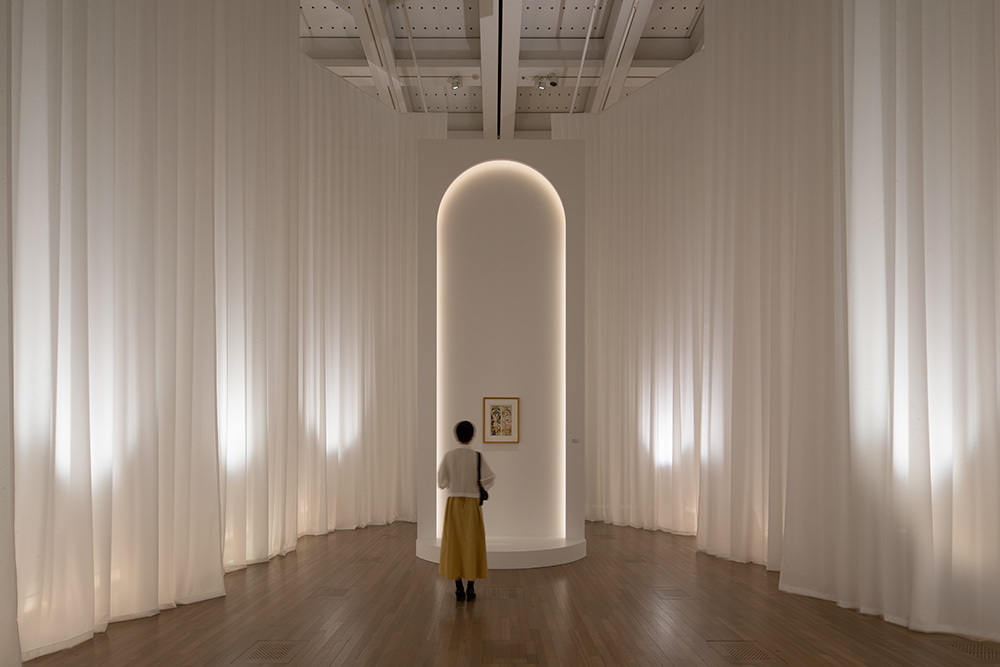
Nanki: This time, we ultimately made the decision to "not add anything." That choice led to an excellent exhibition, and I'm glad we did it.
Matsuura: Throughout this project, I also felt the sheer power of Dentsu Inc.'s team. Starting with Mr. Nakano and Mr. Nanki, the entire creative team read through every single CLAMP work, deeply analyzed them, and then clearly articulated and visualized their insights to brand the exhibition. I was truly amazed by their ability to accomplish this immense task within a tight schedule while maintaining such high quality. Their meticulous attention to detail was outstanding, from setting the exhibition's theme to the key visuals, spatial design, and even the placement of the original artwork.
──Both the "Sakura Exhibition" and "CLAMP Exhibition" saw impressive visitor numbers, but beyond that, they frequently trended on Twitter (now X), suggesting very high fan satisfaction. What were the key points in designing an experience that delighted fans?
Seki: When forming these creative teams, we always include members who are fans of the target audience or the work itself. However, we also consistently assign people who are "neutral" and not deeply familiar with the subject matter. Having both types ensures the team avoids becoming too niche or too light. Achieving that balance is crucial for creating an exhibition that a broad audience will appreciate.
For example, if we included situations in the exhibition that fans might enjoy in their own fan creations, we sometimes heard, "We don't want the official side doing things like this." From the fans' perspective, there are probably parts where they want room for their own imagination. It's important to maintain boundaries so the official side doesn't impose too much. Drawing this line is difficult, but having people who can view things neutrally offer their opinions helped us maintain a good balance.
Matsuura: Working on this exhibition fostered a great atmosphere where members experiencing CLAMP's work for the first time and longtime fans could equally share their opinions. For instance, curator Niimi offered an art-focused perspective: "When viewing it as art, too many intense images can be exhausting; we need calmer pieces interspersed." Ultimately, I think the space achieved a great match between overall control and individual passion.
Merchandise sales: A relentless pursuit of resale prevention and "no sold-out items," with daily improvements
──Merchandise sales are a key element in making an exhibition a business success. The CLAMP exhibition offered a wide variety and vast quantity of goods, with extremely thorough anti-scalping measures, ensuring fans who visited could actually get what they wanted.
Matsuura: Merchandise is the only tangible way for visitors to take home their exhibition experience. During the Sakura exhibition, we actually ran out of many items by the second day, which was a major lesson learned for us as organizers. Exhibition merchandise is something you can only buy at that specific time, so people tend to buy a lot. On the other hand, unsold items become inventory, meaning the production side bears a very high risk. That said, my job is to quantify the rationale and persuade the manufacturers to secure sufficient quantities. So, on this point, I think it boils down entirely to my own lack of persuasive ability.
We asked nearly the same manufacturers as the Sakura Exhibition to develop the goods. They, too, reflected on the sell-out at that event. So, everyone united, determined to learn from that experience and ensure the goods reached fans properly this time.
Sekine: Merchandise like this tends to become quite similar across different manufacturers. For the CLAMP exhibition, we balanced the use of works and art (illustrations) while also carefully planning the overall portfolio, including the variety of merchandise types. This was an incredibly demanding task, and I could really feel the passion of Matsuura and the team.
Matsuura: We set conditions like handling all 23 works and established detailed merchandising rules, planning to produce roughly double the volume of previous entertainment exhibitions. Our core licensing principle was "leave no visitor disappointed." We absolutely avoided situations where someone couldn't find merchandise for their desired work, while also ensuring sufficient stock to prevent sell-outs.
Working with our merchandising partner, Movic, we analyzed traffic data after announcing goods on the official site. For highly popular items with lots of clicks, we instructed manufacturers to produce additional stock even before the opening. Thanks to this, we were able to make significant mid-event restocks.
Seki: Simultaneously, we considered how to handle enthusiastic customers making bulk purchases. Drawing on my own experience, we devised rules, announcement methods, and operational procedures to ensure compliance.
To maximize satisfaction for as many people as possible, we meticulously refined details right up until the last minute. This included quantity limits like "one per type for non-random items," measures to reduce wait times such as "limiting shop stay durations," and "exchanging numbered tickets while waiting." I believe the flexibility and responsiveness of the operations team played a huge part in this.
Matsuura: For resale countermeasures, we monitored social media feedback and on-site developments daily, making improvements in close coordination with Mr. Seki. The speed of our responses was greatly aided by Muvic, the operations team, and Dentsu Inc.
Furthermore, since obtaining agreement from the entire production committee each time would have been time-consuming, for the CLAMP exhibition, while the major policies were decided by the full committee, day-to-day on-site decisions were entrusted to Seki-san and me. This created a system where we could make and execute decisions immediately.
In this digital age, real-world "spaces" become the weapon that creates experiential value
──Regarding your "Experience × Content" initiative, what are your future goals?
Matsuura: We want to expand the exhibition business overseas. Even if it's not the exact content we held in Japan, we hope to bring it to the world. Hosting the CLAMP exhibition made us realize anew just how many overseas fans there are. We truly felt again how CLAMP's work is loved regardless of gender or age, and even transcends national borders.
As a publisher now, I strongly sense a demand from fans for "experiences." Beyond events, I want to challenge new initiatives outside publishing together with Dentsu Inc.
Nanki: I'm deeply interested in museums. Ideally, I'd love to create a permanent museum dedicated to artists like CLAMP. I want to design a new spatial model, creating a "place" where visitors can truly experience the artist's essence and brilliance.
Seki: I have two goals. One is to create a permanent facility like Nanki mentioned, where we can rotate works and content while branding and curating it ourselves. I hope to create a space that brings joy to everyone involved with the works, including content holders like Kodansha.
The second is expanding this business model to North America and Europe. Just from the exhibitions I've handled, I've built up routes, partners, and a track record for touring within Asia. I'd love to extend that to North America and Europe, creating sites where exhibitions can be held. This overseas expansion is also a strength of Dentsu Inc. as a global company. Even within Asia, there are very few examples of exhibitions of original artwork that successfully tour.
As content distribution and online expansion grow, having a physical "space" becomes a powerful asset that adds experiential value to the work. I want to continue pursuing the strengths of exhibitions going forward.
Was this article helpful?
Newsletter registration is here
We select and publish important news every day
For inquiries about this article
Author

Matsuura Nozomi
Kodansha Ltd.
Rights Media Business Division Rights MD Department and IP Business Department
Deputy Director
Graduated from Ritsumeikan University. Worked for about 10 years at a major toy manufacturer, primarily handling character merchandising business for girls' products. Subsequently joined Kodansha. Currently engaged in licensing and production duties for CLAMP works.

Shunsaku Seki
Dentsu Inc.
Publishing Business Development Division Content Account Division 2
General Manager
Graduated from the Department of Urban Engineering, Faculty of Engineering, University of Tokyo. After joining the company, spent 10 years in client-facing sales roles including publishing clients. Following the establishment of the Publishing Business Promotion Division, spearheaded business development focused on content investments such as exhibitions, app development, VR ventures, and media development. Handled production duties for content businesses centered on manga and anime. Since 2024, has served as General Manager of the publisher's Business Promotion Division, dedicated to solving challenges for the publishing company.

Ryusuke Nanki
Dentsu Inc.
Future Creative Lead Office
Architect
Born in Shinjuku, Tokyo. Graduated from Keio University. During university, belonged to Shigeru Ban's seminar. Handles spatial design (exhibitions, offices, stores, architecture), branding (traditional culture, cities), and product development (planning, product design). Past projects include planning/spatial design for the Paris Rosanjin Exhibition; planning and editing the Japanese confectionery collection "IKKOAN" with trilingual Japanese-French-English text; creative direction for Michi-no-Eki Toyohashi; and rebranding for Tsukiji Outer Market. Selected for the Ministry of Foreign Affairs Japan Brand Promotion Project in 2016, delivering lectures in Europe.


